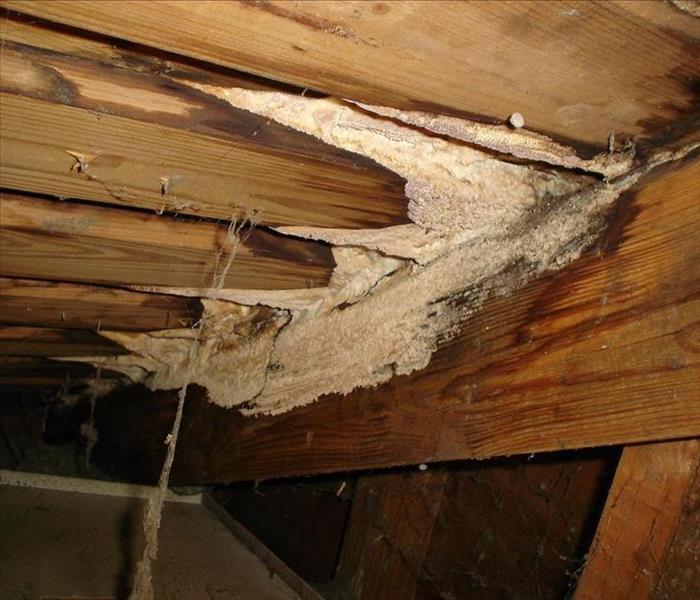Controlling Mold in your environment
11/25/2015 (Permalink)
Mold– It is a four letter word that makes most people cringe. But contrary to popular belief, not all mold is dangerous; some mold is even quite useful. Fungi and mold naturally occur in our environment. More than 100,000 different types of fungi have been identified. You can find fungi in our everyday lives in bread and baked products; the unique flavor of blue cheese is the result of mold. Though some types of mold can be useful, many other forms can be harmful. Excessive amounts of mold and mold exposure may present health concerns for some people.
The intrusion of water into your home or business can result in mold growth. Water intrusions can result from storm damage, plumbing or equipment failures, long standing leaks and poor humidity control. When these water intrusions are not addressed right away, the resulting damage can be an increased risk of harmful mold growth. Mold spores are normally present in most environments. If the humidity and moisture levels in a water damaged environment are not controlled, mold spores can grow and multiply. Organic materials found inside a building, like wood, drywall, paper and insulation, provide a food source for mold, allowing growth to flourish. This can lead to indoor environmental conditions that pose a health threat.
SERVPRO® of Martin County handle water damages every day and know prompt action is required to prevent mold growth. Mold is more likely to spread when an environment has been subject to moisture for an extended period of time. If your property has sustained a recent water damage, it is vital to remove excess water and dry the structure promptly. Once the environment is dry, it is important the structure is properly cleaned.
When determining if you have a mold problem, be alert for: the presence of visible mold, strong musty odors, evidence of past moisture problems and excessive humidity. If you fear you have a mold problem, call SERVPRO® of Martin County. A technician trained in mold remediation will examine the structure and determine the steps needed to contain and clean the affected areas.






 24/7 Emergency Service
24/7 Emergency Service